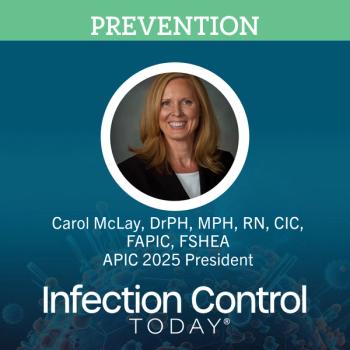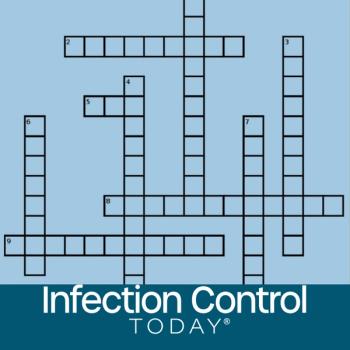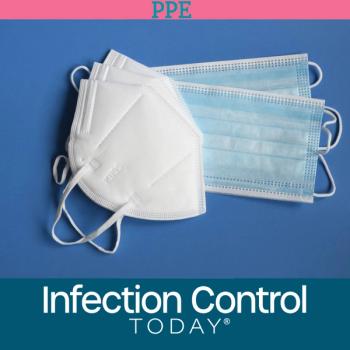
Six-Day Antibiotic Cellulitis Therapy Results in Faster, Greater Relapse Than 12-Day Course
Cellulitis treated with a six-day course of intravenous antibiotic flucloxacillin resulted in greater rates of relapse at 90 days post treatment despite having similar short-term results to that of the 12-day course, according to research presented at the 28th European Congress of Clinical Microbiology and Infectious Diseases (ECCMID).
Cellulitis, a skin infection that can become life threatening, usually takes hold through a cut in the skin and is often caused by Staphylococcus or Streptococcus. The recommended antibiotic treatment duration is 10 to 14 days. As many infections have seen their antibiotic therapy duration shortened in recent years presenting author, Dr. Duncan Rowan Cranendonk and his team expected to be able to shorten cellulitis treatment in a similar way. They investigated how six days of treatment compared to a 12-day course of antibiotics in patients hospitalized with cellulitis.
The primary outcome for patients participating in this study was for a cure by day 14 without a relapse by day 28. In the 12-day group, 35 patients, or 49.3 percent, were cured without relapse by day 28. In the six-day group, 35 patients, or 50.7 percent, reached the primary outcome. The study showed that the secondary patient outcome with the modified cure assessment was also similar, with 53 patients, or 74.6 percent, in the longer-term treatment group cured without relapse after 28 days compared with 49 patients, or 71 percent, in the shorter-term group. However, the secondary outcome of relapse rate by day 90, showed differences in effectiveness of the treatment duration.
"After initial cure without relapse, relapse rates at day 90 were higher in the six-day group than in the 12-day group," Cranendonk said. "Patients with a shorter course of therapy showed significantly faster and more frequent relapses by day 90."
Cranendonk said the results showed that "short-term outcomes are not everything." He also said physicians should consider developing a better measure for what it means to be "cured." Cellulitis, for example, lacks solid outcomes like a microbiological cure, and the "cured" verdict is still one made by clinicians, which makes it subject to interpersonal variation, he explained. An earlier small trial found no differences in outcome between short and standard therapy duration when looking at young healthy outpatients.
"Our trial is the exact opposite; we had elderly hospitalized patients with a lot of comorbidity. This is the population clinicians are likely to see, but unfortunately, therapy cannot be shortened within this population." The next step would be to investigate which patients would benefit from a shortened therapy duration. Cranendonk suggests this may be the case for elderly outpatients with comorbidity who are not severely ill.
The researchers enrolled 151 adult patients in 11 Dutch hospitals in the randomized, placebo-controlled, double-blind trial between 26 August 2014 and 29 June 2017. In double-blind trials, neither the investigators nor the patients know which patients receive the active medication or the placebo. Patients who had been treated successfully for six days and who had no fever and a lower cellulitis severity score were enrolled in the study.
The patients were randomized by diabetes status and location. Seventy-seven patients were allocated to receive another six days of intravenous flucloxacillin, while the remaining 74 patients received the placebo. The average age of the patients in this study was 63 and two-thirds were men. A quarter of the participants were diabetic, a population that is at a higher risk for cellulitis of the foot.
The trial was stopped early because of slow recruitment. Cranendonk warns that the results should be interpreted with caution because the researchers didn't reach their intended sample size.
"While the point estimate of the absolute risk reduction may be an indication of things to expect if our trial had reached its target, we cannot be certain there is no clinically significant difference between the two," he said. "As for the relapse rate at 90 days, the fact that the observed difference, even within this relatively small sample size, is statistically significant suggests there likely is an actual difference."
Reference: Abstract No. O1122, Antibiotic treatment for 6 days versus 12 days in patients with severe cellulitis: a multi-center randomized, double-blind, placebo-controlled, non-inferiority trial; Late breaker: Clinical trials, 16:00 - 18:00, Sunday, 22 April 2018, Hall Q
Source: European Society of Clinical Microbiology and Infectious Diseases (ESCMID)
Newsletter
Stay prepared and protected with Infection Control Today's newsletter, delivering essential updates, best practices, and expert insights for infection preventionists.






